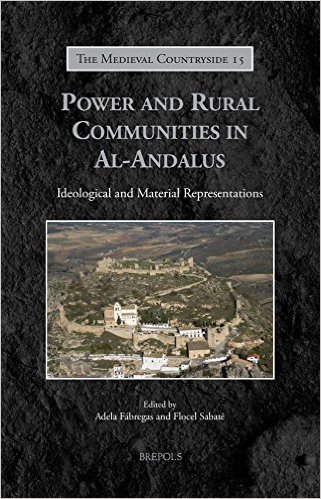
08 Abr Power and Rural Communities in al-Andalus
En el año 2015 vio la luz el libro Power and Rural Communities in al-Andalus. Ideological and Material Representations, editado por Adela Fábregas y Flocel Sabaté y publicado por la editorial Brepols.
Este volumen, que cuenta con la participación de diversos expertos, trata de explorar nuevas definiciones del poder estatal en al-Andalus a lo largo de la Edad Media a través del examen de las interacciones del Estado andalusí y la sociedad islámica, adoptando metodología arqueológica y prestando atención a momentos específicos de la historia de esta región del mundo musulmán, en una variedad de contextos geográficos y locales.
Ficha bibliográfica:
- Tapa dura: 218 páginas
- Editor: Brepols Publishers
- Colección: The Medieval Countryside
- Idioma: Inglés
- ISBN-10: 2503553427
- ISBN-13: 978-2503553429
Resumen:
This volume explores new definitions of state power in Al-Andalus throughout the Middle Ages by examining the interactions of the Andalusian state with its Islamic society, looking at specific moments in Andalusian history in a variety of local, geographical contexts. The essays collected here adopt largely archaeological methodologies, considering in turn the various spaces reclaimed by the state and its material remains, as well as the footprints of state impact on other local and territorial organizational structures. In addition, these means of analysis directly highlight those spaces that remained outside of state control, while also supporting consideration of how and why they managed to do so.
The essays use the territorial dimension of the kinship–state dichotomy as a starting point for considering its means of operation and evolution over time. Beginning with the traditional assumption that territorial configuration patterns are heavily determined by the relative weight of the different authorities operating in a given territory, the essays identify the different agents operating in Al-Andalus (mainly the state and gentry-based peasant communities) through insightful archaeological and historical considerations of medieval Andalusian society’s material remains. With special attention also paid to the Nasrid Kingdom of Granada — the Andalusian territory lasting longest under Muslim rule — this collection makes an important contribution to larger historiographical debates surrounding the medieval Islamic world.
Índice de contenidos de Power and Rural Communities in al-Andalus
Prologue
Agents of Local Power in the Nasrid Kingdom: Their Influence on Social Networks and Leadership — ADELA FÁBREGAS
Power and Rural Communities in the Banu Salim Area (Eighth–Eleventh Centuries): Peasant and Frontier Landscapes as Social Construction — MARISA BUENO SÁNCHEZ
Where is Power in a Marginal and Border Area? Northern Guadalajara in the Times of Al-Andalus (Eighth–Eleventh Centuries) — GUILLERMO GARCÍA-CONTRERAS RUIZ
Representations of Power in Rural Communities in Southeastern al-Andalus (Tenth–Thirteenth Centuries) — JORGE A. EIROA RODRÍGUEZ
Nasrid Frontier Fortresses and Manifestations of Power: The Alcazaba of Moclín Castle as Revealed by Recent Archaeological Research — ALBERTO GARCIA PORRAS
Settlement Change in Granada’s Western Mountains: The Relationship between Power and Rural Communities in the Middle Ages — LUCA MATTEI
Rural Areas on the Fringes of Power: Rediscovering the Importance of El Quempe in the Nasrid Kingdom of Granada — SONIA VILLAR MAÑAS
State Intervention in Rural Landscapes Configuration: Granada from the Thirteenth to the Sixteenth Centuries — LUIS MARTÍNEZ VÁZQUEZ
Index of Places
Index of Names
General Index



No Comments